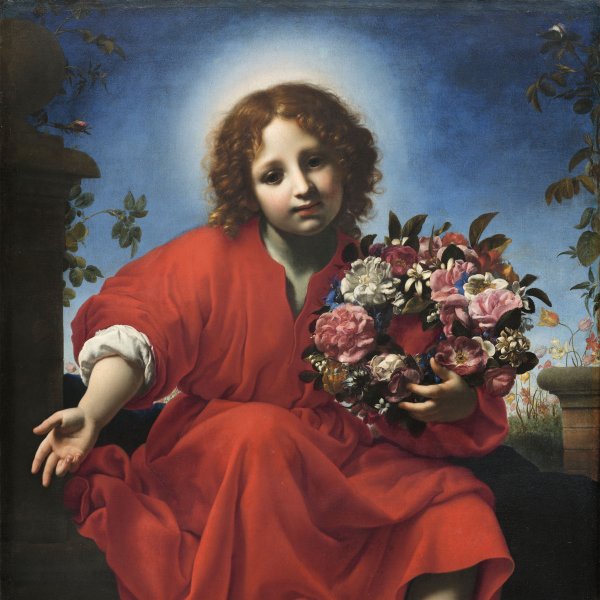Carlo Dolci
Considered the most important Florentine painter of the 17th century, Carlo Dolci was a precocious artist who produced his first work, a Portrait of Stefano della Bella, at the age of fifteen (Palazzo Pitti, Florence), considered a key work within his oeuvre. Dolci trained with Jacopo Vignali, entering his studio in 1625 aged nine, while in 1632 he is recorded in the census of Florence as an independent painter. Dolci’s style combines an expressivity derived from Vignali with the elegant design and lively colours typical of Florentine art. One of his principal characteristics is the high finish of his works, particularly in his religious compositions. According to the 17th-century art theoretician Filippo Baldinucci, Dolci’s early patrons included Piero de’Medici, the musician Antonio Landini, and Cardinal Leopoldo de’Medici. From the outset of his career Dolci enjoyed the success that would accompany him throughout his life. During his early years the artist copied works by the great 15thand 16th-century masters, including Fra Angelico, Ghirlandaio, Michelangelo and Correggio, while his contacts with the Medici enabled him to study the work of contemporary Dutch painters, particularly Willem van der Aelst. Dolci executed still lifes but specialised in religious subjects, presented in a didactic manner. His most important paintings include Saint Andrew praying before his Martyrdom (City of Birmingham Museum and Art Gallery, Birmingham), The Vision of Saint Louis of Toulouse (Palazzo Pitti, Florence), The Guardian Angel (Museo Prato Duomo, Prato), and The Supper in the House of the Pharisee (Corsham Court, Wiltshire).
Dolci had numerous followers and imitators including his own daughter, Agnese Dolci, who executed replicas and copies of her father’s compositions. Dolci’s work was highly appreciated from the 17th century onwards, particularly in England.





